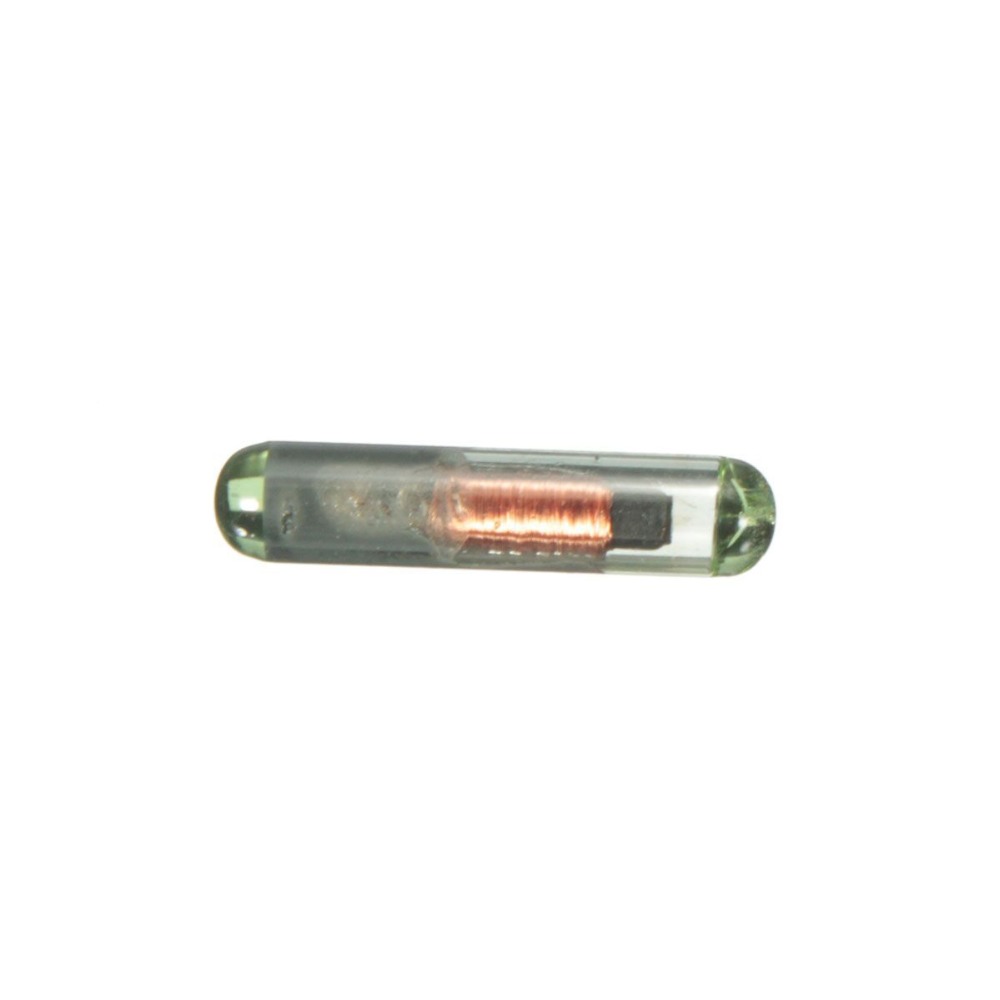Introduction
The aviation industry operates in a complex environment where safety and efficiency are paramount. One of the critical components that play a crucial role in ensuring these factors is the transponder. Transponders facilitate communication between airplanes and air traffic control (ATC), enhancing situational awareness and operational safety. This article delves into what transponders are, their types, how they function, and their significant contributions to modern aviation communication.
What is a Transponder?
A transponder, short for “transmitter-responder,” is an electronic device that receives a signal and automatically transmits a response. In aviation, transponders serve as essential tools for identifying aircraft to air traffic controllers and other pilots in the vicinity. When an air traffic controller sends a signal to an aircraft’s transponder, the device responds with specific information, allowing ATC to track the aircraft’s position, velocity, and altitude accurately.
Types of Transponders
- Mode A Transponders:
- Mode A transponders primarily transmit a four-digit code known as the squawk code, which air traffic control assigns to individual aircraft. This code allows ATC to identify specific flights visually on radar.
- Mode C Transponders:
- Building on the capabilities of Mode A, Mode C transponders provide both the squawk code and the aircraft’s altitude. This altitude data is crucial for ensuring vertical separation between aircraft, thus enhancing safety. Mode C is widely used in controlled airspace.
- Mode S Transponders:
- Mode S (Selective) transponders are more advanced and have the capability to transmit both squawk codes and altitude information, similar to Mode C. However, they can also send additional data like aircraft identification, ground speed, and other vital information. Moreover, Mode S offers a selective addressing feature that allows a ground station to communicate with specific aircraft, reducing the noise on the communication channel.
- ADS-B (Automatic Dependent Surveillance–Broadcast):
- ADS-B is a newer technology that utilizes GPS signals to determine an aircraft’s precise location, speed, and altitude. It then broadcasts this information to ATC and other aircraft equipped with ADS-B receivers. This improves situational awareness and enhances safety during all phases of flight, especially in crowded airspace.
How Transponders Function
Transponders operate over various radio frequencies, with each mode utilizing specific ones to communicate with ground radars. The basic functioning of a transponder includes:
- Signal Reception:
- The transponder receives a signal from ATC, typically a radar pulse.
- Signal Processing:
- Upon receiving the signal, the transponder processes the information. For Mode A, it provides the squawk code, while Mode C includes altitude data.
- Transmission:
- The transponder then sends back its response through different frequencies, allowing ATC radar systems to display the aircraft’s information on their screens.
- Continuing Communication:
- This two-way communication continues throughout the flight, ensuring that ATC has updated information on the aircraft’s position and altitude.
Contributions to Aviation Communication and Safety
Transponders significantly enhance communication and safety in aviation in several ways:
- Enhancing Situational Awareness:
- With the detailed information provided by transponders, air traffic controllers can maintain an accurate picture of air traffic in their assigned airspace. This situational awareness is crucial for managing traffic, especially in busy airspace.
- Collision Avoidance:
- Transponders, particularly those utilizing ADS-B technology, improve collision avoidance systems. With real-time position and altitude data from surrounding aircraft, pilots can make informed decisions that significantly reduce the risk of mid-air collisions.
- Efficient Airspace Management:
- By allowing ATC to identify and track multiple aircraft simultaneously, transponders facilitate more efficient traffic management. As a result, controllers can optimize flight paths and minimize delays, contributing to fuel savings and reduced environmental impact.
- Search and Rescue Operations:
- In the unfortunate event of an aircraft accident, transponders provide critical information regarding the last known location of the aircraft. This data is essential for conducting effective search and rescue operations, ultimately saving lives.
- Compliance with Regulatory Requirements:
- Regulatory bodies worldwide, such as the Federal Aviation Administration (FAA) and the European Union Aviation Safety Agency (EASA), mandate the use of transponders in various airspace classifications. Pilots and operators must comply with these regulations, contributing to global aviation safety standards.
The Future of Transponders in Aviation
As technology continues to advance, the role of transponders in aviation communication is set to evolve further. Developments such as Enhanced Mode S transponders and the integration of artificial intelligence into air traffic management systems may deliver even greater capabilities. Innovations in satellite communication and data link technologies will likely complement terrestrial communication systems, allowing for improved tracking of aircraft over vast oceanic regions and remote areas where radar coverage is limited.
Furthermore, projects aimed at automating ATC procedures and enhancing the overall safety of air travel are on the horizon. As these technologies merge with existing transponder systems, the “seamless” operation of aircraft within the integrated air traffic system will become more achievable, paving the way for a new era in aviation.

Understanding Transponder Technology
Transponders are sophisticated electronic devices that automatically communicate information to other devices when activated. At their core, transponders consist of two main components: a tag (or transponder) that contains the identification data and a reader that extracts this information as the tag passes within range. While traditionally used in applications like toll collection and vehicle tracking, the logistics sector has adapted transponder technology to facilitate real-time tracking of goods and assets throughout the supply chain.
There are various types of transponder technologies, including Radio Frequency Identification (RFID), Bluetooth Low Energy (BLE), Near Field Communication (NFC), and infrared transponders. Each of these technologies has unique features suitable for different applications in logistics, making transponders versatile tools for streamlining the movement of goods.
The Need for Enhanced Tracking Solutions
Today’s logistics industry grapples with numerous challenges that demand innovative solutions. With the surge in e-commerce and customer expectations for faster deliveries, companies face pressure to improve inventory management, reduce operational costs, and enhance accuracy in tracking shipments. Traditional tracking methods, often reliant on manual data entry and outdated barcode systems, are insufficient to meet the current demands.
Transponder technologies address these issues head-on by providing integral features like:
- Real-Time Visibility: Transponders enable logistics managers to track the location and status of shipments in real time, reducing uncertainty and improving decision-making. For instance, RFID tags attached to pallets allow companies to instantly locate their products within large warehouses.
- Accuracy and Efficiency: With automation through transponder technology, manual errors associated with data entry are significantly reduced. This improvement leads to higher accuracy in order fulfillment and inventory management.
- Enhanced Customer Experience: Real-time updates provided by transponders enhance transparency for customers. With tracking information at their fingertips, businesses can keep customers informed about their shipments, leading to improved satisfaction and trust.
- Cost Reduction: By streamlining processes and minimizing losses related to misplaced or mismanaged inventory, transponder technologies contribute to cost savings. The initial investment in transponder systems can yield significant long-term benefits through operational efficiencies.

Applications of Transponder Innovations in Logistics
The application of transponder innovations in logistics is vast and varied. Here are some notable use cases that exemplify their potential:
- Inventory Management: RFID and NFC technologies allow for automated inventory tracking. Retailers and warehouses can adapt these systems to perform regular counts without stopping their operations, ultimately leading to an optimized supply chain.
- Cargo Tracking: Transponders can monitor cargo as it moves through different transportation modes, such as trucks, ships, and planes. This visibility facilitates better planning, scheduling, and risk management during transport.
- Cold Chain Monitoring: In industries where temperature-sensitive products are transported, such as pharmaceuticals and food, transponders can monitor environmental conditions. Smart temperature sensors integrated with transponder technologies add another layer of security, ensuring that products remain within the required temperature ranges during transit.
- Asset Tracking: Businesses can place transponders on equipment or vehicles, facilitating real-time fixed asset management. This capability not only helps prevent loss or theft but also ensures better utilization of resources.
- Return Logistics: The process of reverse logistics, or managing returns, can also benefit from transponder technology. Identifying returned items accurately can streamline the restocking process and minimize operational disruptions.
Future Trends in Transponder Technology
With ongoing technological advancements, the future of transponder innovations in logistics appears promising:
- Integration with IoT: The Internet of Things (IoT) will play a significant role in the evolution of transponder technologies. The integration of IoT with transponder systems enables even more sophisticated data gathering and analytics, as devices can communicate and share data seamlessly across various networks. This connectivity will create a holistic view of supply chain operations.
- Artificial Intelligence: The incorporation of AI into transponder systems can lead to predictive analytics. By analyzing historical data, AI can enhance decision-making processes related to inventory levels, optimizations in routing, and anticipating maintenance needs.
- Sustainability: The logistics industry is increasingly focused on sustainability. New developments in transponder technology, such as low-power transponders and solutions that enhance route optimization, can further reduce carbon footprints and contribute to greener logistics practices.
- Enhanced Security: Innovations in cryptography and security measures will ensure that transponder-based systems remain secure from cyber threats. Advanced authentication methods will protect sensitive shipment data from unauthorized access.
- Global Standards: As transponder technology becomes ubiquitous, there will be a need for standardized systems to ensure compatibility across different networks and countries. Collaborative efforts among stakeholders can lead to consistent global standards to facilitate international trade.

Conclusion
Transponders are vital instruments that greatly enhance communication and safety in the aviation industry. By enabling accurate identification and tracking of aircraft, transponders have transformed air traffic management, making air travel safer and more efficient. As technology continues to advance, the capabilities of transponders will likely expand, contributing to a more secure and interconnected aviation environment. Understanding the importance of transponders in aviation is key to appreciating the intricate systems that keep our skies safe and our flights on course.


Leave a Reply